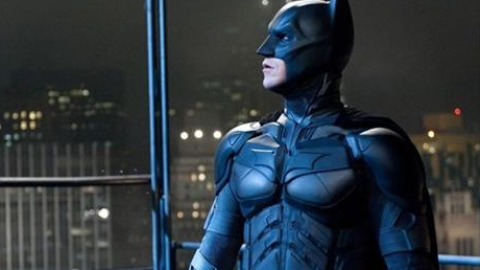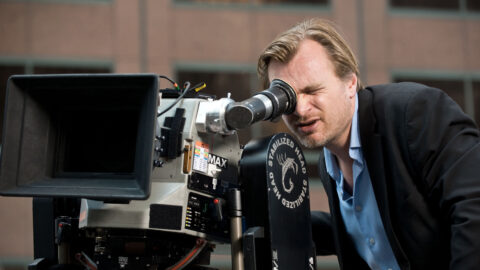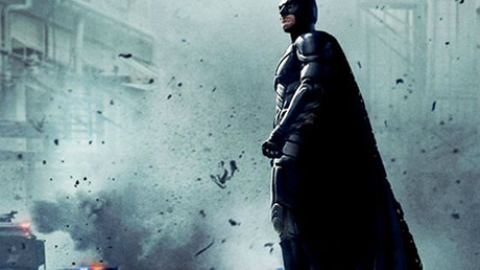Film of the Week: Dunkirk
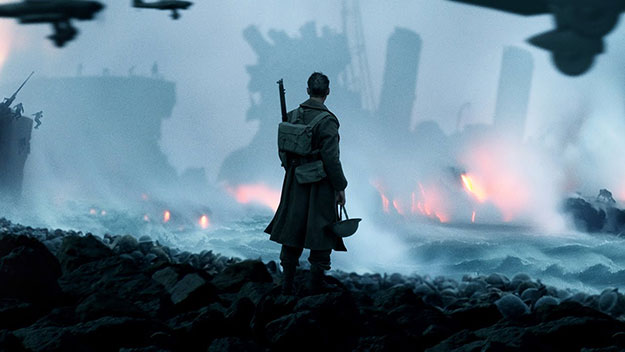
It’s not always easy to know what’s going on in Christopher Nolan’s Dunkirk—which makes the film seem all the more convincing as an evocation of war. There’s a sharp, cold note of realism in the opening minutes of last week’s release, War for the Planet of the Apes, in which a terrified human soldier, part of a platoon taken unawares in an ambush, admits in a radio call to his command post that he has no idea what is going on. Dunkirk takes that uncertainty and amplifies it a thousandfold, from start to finish.
The story of Dunkirk is well-known to the point of being legendary: the British used to refer, not without self-flattery, to “Dunkirk spirit”, meaning persistent faith and resilience in the face of overwhelming odds. Nolan’s film recounts the events of late May and early June 1940, when over 300,000 British troops were evacuated from a beach in Northern France, by both naval vessels and a fleet of civilian boats, after German power had cornered British and French forces on this point of the coast. The evacuation, known as “Operation Dynamo,” represented a turning point in the course of World War II, and led Winston Churchill to make his morale-boosting “we shall fight them on the beaches” speech, encouraging Britain to resist the real possibility of German invasion. The story has been told in cinema before, notably in the 1958 Ealing production Dunkirk, directed by Leslie Norman, and featuring those quintessentially heroic leads John Mills and Richard Attenborough; more recently, the episode was evoked in vignette form in a virtuoso but somewhat grandstanding five-minute tracking shot in Joe Wright’s Atonement.
Wright’s self-contained panorama of the Dunkirk beach struck me as brilliantly conceived but too eager to impress—so what does that make me feel about Nolan’s out-and-out spectacle, shot on 65mm film, and now viewable in some theaters in IMAX? To tell the truth, I haven’t much enjoyed Nolan’s work since Memento: parts of Inception dazzled me, but I found Interstellar and the Batman films ponderously self-important. Dunkirk, however, is something else again. You come away, at the very least, cautiously nursing the feeling that no mainstream film since the opening of Saving Private Ryan—an avowed reference of Nolan’s—has reinvented the urgency of war cinema this thoroughly. Of course, a viewer who has never experienced war directly can’t begin to gauge how close to real combat experience these films are; besides, both of them are all about drumming up an effect of immersive urgency that is never entirely distinguishable from the vicarious aesthetic of Sensurround spectacle. Yet, even given these caveats about war cinema as a vehicle for excitement, Dunkirk does feel like a convincing and thorough evocation of how it might have felt to have been there.
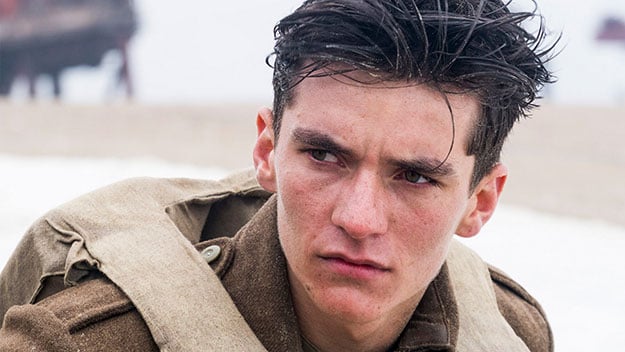
Part of what makes Dunkirk works is the casting. Nolan hasn’t taken the traditional The Longest Day path of filling his film with major stars for us to follow through the confusion; there are some recognizable faces, but some appear less as characters per se than as signposts to help us navigate by. Kenneth Branagh—playing the film’s most conventional embodiment of authority and “bulldog breed” tenacity—is almost literally a beacon as Commander Bolton, the naval officer standing at the tip of a long “mole” or pier, overseeing the evacuation. It’s a solid, reserved performance, as befits a figure who’s less a person, more a human lighthouse.
Tom Hardy, as a Spitfire pilot, could almost be playing Bane again, with his face almost permanently obscured by his flying mask, and nearly always seen in close-up in his cockpit (the cockpit shots display the film’s adept management of closed space). Cillian Murphy plays a soldier, seen both mustering his men in an evacuation by boat and behaving most unheroically after being rescued in a shell-shocked condition: this contrast is one of the ways in which the film engages with the reality of human nature, dismantling war cinema’s pieties about bravery. Most striking among the name actors—although typically reserved for this most discreet of performers—Mark Rylance plays Dawson, the owner of a small civilian vessel from the English seaside town of Ramsgate, who decides to ship out and help the evacuation. It’s a sterling evocation of calm, level-headed determination, but it also suggests a man who, no doubt like many civilians who participated, could be heroic because he had no real sense of what he was sailing towards.
Otherwise, the casting focuses on unknowns, or near-unknowns, and the fact that we often don’t know whom we’re accompanying through particular scenes—some of these dark-haired, anxious-faced young men look very alike—corresponds to the fact that they don’t know, either. One of Dunkirk’s most striking, already much-reproduced images shows a line of helmets receding down the mole; as German planes fly overhead, a helmet turns and the young man underneath it looks up anxiously. I’m not sure if this is one of the named actors in the cast, or an extra; either way, he has already become, in a sense, the iconic face of the film.
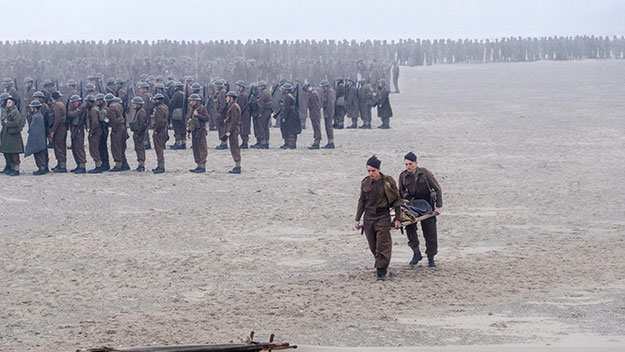
The character we mainly accompany on the beach is a young soldier, the generically named Tommy (Fionn Whitehead), seen at the start as the sole member of his detachment to make it through a hail of bullets—and I can’t remember the last time that the sound of gunfire on screen felt so thunderously, dangerously real. The film starts in the thick of things, with a dazzling image: a group of men walk along a Dunkirk street as pieces of paper flutter around them, dropped from above. They are postcards from the German forces, carrying the warning in English, “We surround you.” Tommy eventually makes it through a wall of sandbags manned by the French. One French soldier tersely, unceremoniously greets him, “Allez, anglais—bon courage”—and then he’s on the other side of things, on the beach.
We really feel that once he has passed that barrier, he’s in a zone that is absolutely other, absolutely detached, with no turning back. This is the absolute edge of mainland Europe, an impression enforced by an extraordinary effect in which Nolan and DP Hoyte van Hoytema isolate one stretch of beach between two white flagpoles, as if placing it within a picture frame or a theatrical proscenium. On the beach, stopping to take a crap (how many war films ever acknowledge the imperatives of the human bowel?), Tommy sees another young soldier, Gibson (Aneurin Barnard), hurriedly burying one of the many bodies that litter the beach. The two men, clicking without the need for much talk, team up to survive: desperate to make it onto one of the ships that troops are boarding, they find a stretcher to get them to the front of the queue.
Dunkirk is pitiless about the way that people will do anything to survive, and about the harsh choices that have to made in war—Bolton tells another officer about the inconvenience of boarding the wounded: “One stretcher takes the place of seven stranded men.” The film also, incidentally, offers a dry comment on the British habit of queuing for everything: the beach is covered with lines of men, waiting patiently (some of them, at least) for ships to carry them away. But the beach is covered with lines: of living men, of dead bodies neatly arranged, of rifles stacked along the sea wall. It’s a sense of tenuously maintained order that we see eroding with increasing intensity as the film progresses.
Nolan, who scripted, and editor Lee Smith create their own singular sense of order, one that is flagged up in the titles at the start of the film, although it takes a while for the viewer to quite grasp it. The action is organized in three interwoven timelines, running simultaneously. The action on the beach and the mole lasts a week, the action on sea one day, and the events in the air—focused on a flight of Spitfires, with pilots played by Hardy and Jack Lowden—covers only one hour. It’s a way of layering the action and giving it three different intensities, although the results can be confusing. I wasn’t originally sure why we kept jumping back from day to night, and only really got what was happening when, having met the shell-shocked Murphy character at sea, we suddenly saw him staunchly rallying his men on a ship at night. The contrast offers an acute insight into how the trauma of war can entirely change a person literally overnight.
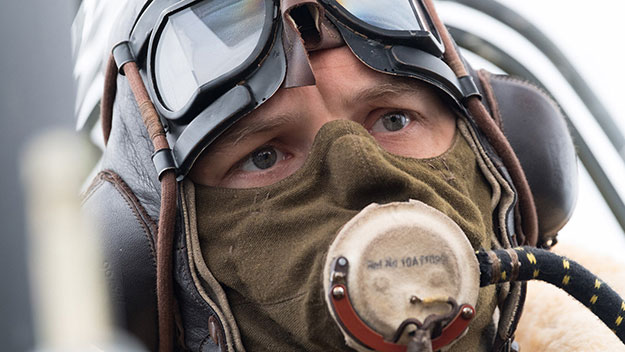
The aspect of Dunkirk which makes it a truly serious work—and the aspect that’s most likely to alienate more jingoistic fans of war cinema—is the chilling light it casts on the will to survive. The Spitfire pilots are ready to face whatever lies ahead, as are Dawson and the two young men sailing with him (Tom Glynn-Carney and Barry Keoghan); but on the beach, among men who have already faced the worst of battle, survival is utmost, and some of them behave in a way that no John Mills character would have countenanced. Three soldiers sit on the beach, amid befouled sea foam, calmly watching as another man, apparently deranged, strides out into the water to certain death. Later, they join a group of soldiers taking shelter in a fishing trawler beached at low tide. They sit in the hold, waiting for the tide to rise and carry them out, but they’re fired on from outside. The soldiers, including a no-nonsense, increasingly belligerent young man played by Harry Styles (the ex–One Direction singer making a more than creditable acting debut) decide they need fewer men on board in order to float. One man is fingered as a possible German infiltrator; in fact, he’s revealed to be French, but they’re only too ready to sacrifice “a cowardly little queue-jumping Frog.” And another Brit is quickly told that he’s next in line to be jettisoned if things come to it. “Survival isn’t fair,” snaps the Styles character. The film offers no sentimental reassurance about solidarity, least of all between Allied forces (this on top of the overall sidelining of the French involvement in Dunkirk, a feature strongly criticized in Le Monde by critic Jacques Mandelbaum). Meanwhile, perhaps the most archetypically plucky of the film’s young characters is tragically demobilized before he has even seen any action, in a ironically futile sacrifice.
Dunkirk is non-judgmental about these lapses of nobility and understanding: the pilots’ bravery is set off against the contempt of the ground forces, convinced that the RAF isn’t helping sufficiently. The film amply conveys the extremes of mind and feeling that the troops on the beach are driven to, with death constantly hovering overhead in the form of the Luftwaffe, and probable death waiting at sea in the ships they hope will rescue them. The hold of a Royal Navy ship offers asylum of a particularly comforting kind: a nurse (one of the handful of women seen) welcomes the men aboard with an offer of “a nice cup of tea”, and soldiers huddle below decks with bread and jam in hand, like children finding their nursery again. Before long, we’ll see many of these men flailing underwater.
Much of the action is overwhelming, even hallucinatory: aerial shots, especially when seen on the vastness of the IMAX screen, breathtakingly capture the vertiginous lean of the sinking ship; tilted shots make walls of water surge in horizontally. The film eschews visual poetry and overtly striking images, yet no shot feels redundant or decorative; it’s a rare film in which every moment counts. A vital factor in Dunkirk’s power is the score by regular Nolan collaborator Hans Zimmer, whose work I’ve generally found somewhat bombastic. But this score, running continuously through the action, propelled by a ticking-clock leitmotif, and partly reworking themes from Elgar’s “Nimrod,” is more fully integrated into the film’s language than any mainstream cinema music I’ve heard of late. It comes across as violent, nervous, propulsive, but entirely un-martial. Mechanical and instrumental sounds fuse: the urgent scrape of violins with boat horns, sheets of brass instruments with the rhythmic surge of a ship’s engines.
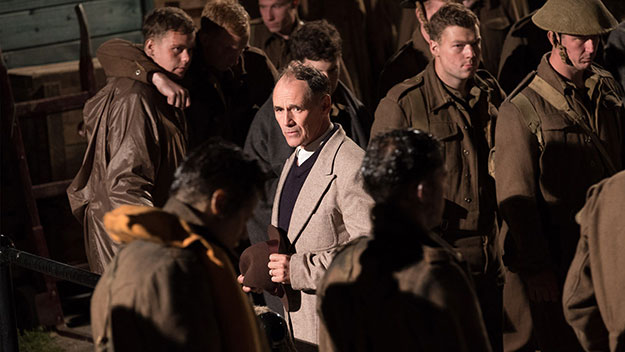
By the end of Dunkirk, I felt exhausted but not overwhelmed. It is a film that you feel you too survive—and I mean that in a good way. As some of the rescued men find their way home, and a quotation from that Churchill speech leaves them contemplating the struggle ahead, you feel that you’ve lived through something overwhelming, but not something that you’ve, in any inappropriate sense, merely enjoyed. You certainly want to see it again—not least, to get a clearer sense of what’s been going on. The confusion within the order of Operation Dynamo, and the hidden order within the seeming confusion of Nolan’s film, make for a complexity that you want to get further purchase on. This is a film not about the fog of war, you might say, but about war’s noise.
Jonathan Romney is a contributing editor to Film Comment and writes its Film of the Week column. He is a member of the London Film Critics Circle.



